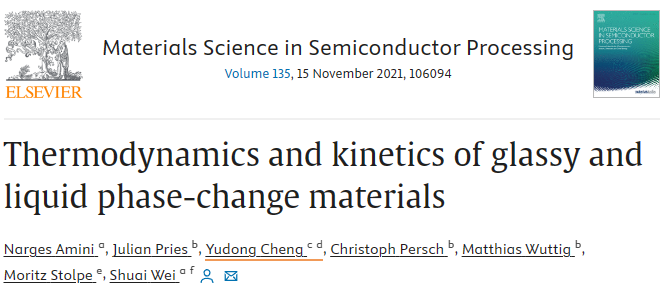
Phase-change memory is a promising nonvolatile memory technology based on a special class of functional materials − phase-change materials (PCMs). PCMs can be reversibly switched between amorphous and crystalline states within the timescale of nanoseconds. The switchable states can be used to encode information for data storage applications. Considerable progress has been made in understanding the properties of the crystalline states, which frequently can be attributed to a unique bonding mechanism denoted as metavalent bonding. The properties of the amorphous states are less well understood, as experimental studies are more challenging due to the lack of long-range order and the interference of fast crystallization. It has been recently recognized that the thermodynamic and kinetic properties of amorphous states in PCMs exhibit some remarkable anomalous behaviors, which may play an important role in determining their switching kinetics. Thus, understanding the amorphous states is of increasing interest for fundamental science, and a necessity for technological innovations. Here we review the recent progress in the studies of amorphous states of PCMs starting from the glassy state, near the glass transition, in the supercooled liquid, and up to the equilibrium liquid state above the melting point. The article focuses on the thermodynamic and the kinetic properties spanning over 16 orders of magnitude in time and over 1000 K in temperature. A better understanding of these properties is motivated by the prospect of realizing significantly faster and more energy-efficient nonvolatile memory technologies. The remaining open questions and the perspectives for future research are discussed.
Link:https://www.sciencedirect.com/science/article/pii/S1369800121004364#!